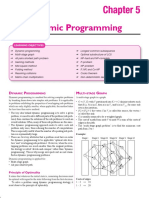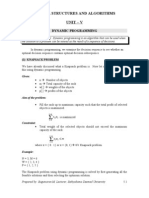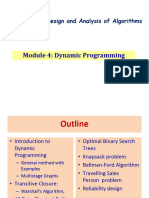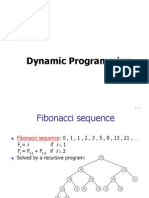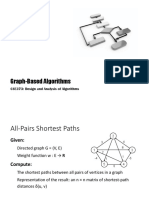0% found this document useful (0 votes)
11 views19 pagesDynammic Programming - 1
The document discusses dynamic programming as an algorithm design method that optimizes decision sequences to solve problems like the knapsack problem and shortest paths in graphs. It outlines the general method, including the principle of optimality and a bottom-up approach for constructing optimal solutions. Additionally, it provides a detailed example of the all-pairs shortest paths problem, illustrating how to compute shortest paths using dynamic programming techniques.
Uploaded by
323506402323Copyright
© © All Rights Reserved
We take content rights seriously. If you suspect this is your content, claim it here.
Available Formats
Download as PDF, TXT or read online on Scribd
0% found this document useful (0 votes)
11 views19 pagesDynammic Programming - 1
The document discusses dynamic programming as an algorithm design method that optimizes decision sequences to solve problems like the knapsack problem and shortest paths in graphs. It outlines the general method, including the principle of optimality and a bottom-up approach for constructing optimal solutions. Additionally, it provides a detailed example of the all-pairs shortest paths problem, illustrating how to compute shortest paths using dynamic programming techniques.
Uploaded by
323506402323Copyright
© © All Rights Reserved
We take content rights seriously. If you suspect this is your content, claim it here.
Available Formats
Download as PDF, TXT or read online on Scribd
/ 19


